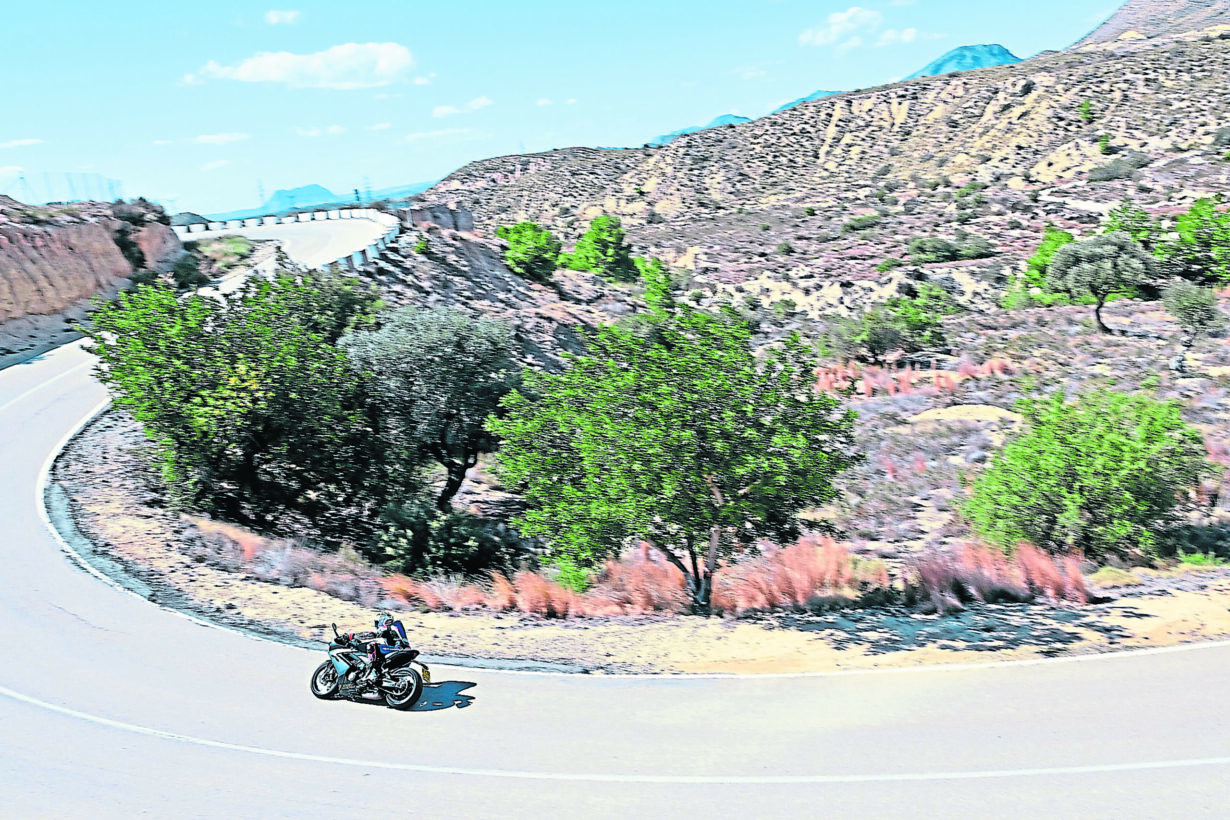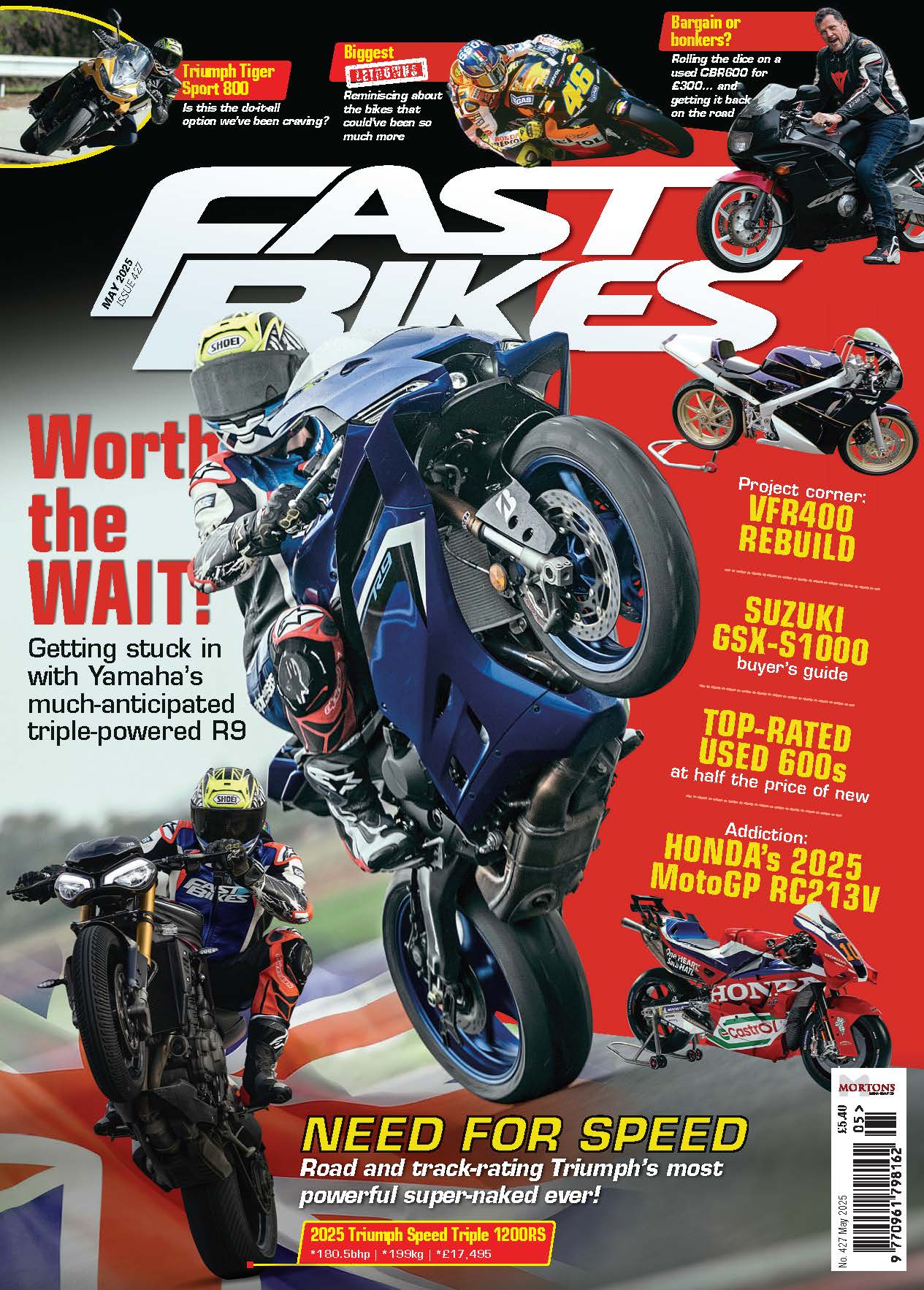You might have wondered whether the name ‘Daytona’ was to be lost in the annals of Triumph’s rife sporting history, but with the introduction of the 660, it’s supposed to be alive and kicking once more. Bruce Wilson found out:
Hot off the heels of arguably one of the most loved and best-selling middleweight sportsbikes on the market, the news of a 660 triple effectively taking the name and place of the masterpiece that came before it didn’t bode well, especially with those of an age who’ve seen, ridden and loved the 675 that first blew the world away back in 2006 when it superseded the lesser-liked Daytona 600/650 (four-cylinders).

But here’s the thing. Putting nostalgia to one side for a second, this isn’t aimed at replacing what’s been before, or even chasing sales from that core of experienced sportsbike riders. It’s more a case of capturing the imagination and desire of the market that has seen an uptick in demand for the emerged twins (and now triple) middleweight entry-level sportsbike sector. Think Yamaha R7, Kawasaki Ninja 650 and Aprilia RS 660.
With the demise of the traditional Supersport 600 scene, the aforementioned upstarts have brought significant sales successes to the brands that have invested in this route. And the best thing for those bold enough to have stepped into the ring is that in almost all cases, the sporty propositions that have come about have been derived from readily produced, fairing-less brethren, meaning production and R&D costs are minimal, at most. And that’s the exact case with the Daytona, which is unsurprisingly based largely around the Trident 660, which has been a big hit since its inception. Bastardising these bikes just makes sense, but so, too, do the raft of changes that have gone into making the Daytona a Daytona – and not just a Trident in a fancy frock.
By the halfway point in the ride, I had a pretty good grasp of the machine. It had many great attributes, the engine being king of them all. It’s impossible to say just how much better it felt than its rivals, because to play that game you really need to do back-to-back testing, but needless to say it was stonking and arguably class leading. The torque was pretty damn exciting low down, to the extent that I left the bike’s traction control on at all times because on the slippy roads we were riding, the abundance of poke this thing was booting through its rear tyre meant grip was often found wanting. Luckily for me, as soon as slip was detected, the TC would calm things down without so much as having to roll the throttle.
I was loving it, having been won over wholesale by the charm of the triple that not only packed a punch at the bottom, but also carried a linear and smooth spread of power right up to its heavenly-sounding rev limiter. Some bikes feel numb and go quiet when you hit the redline, but the Daytona boomed like a bear when you took liberties with its engine’s tolerance for revolutions, making me want to do so more, and more often – sorry, Triumph.
The truth is that the engine felt disproportionately capable when compared to the rest of the package. Entry-level it most certainly was not – or shy of popping wheelies, for that matter. But for all its ferociousness and fire power, it could also do calm, and when tootling through towns, it was silky-smooth and totally obliging. The fuelling throughout was faultless and the gearbox good, but I was surprised that the bike had come to market without a quickshifter fitted.
Having travelled on some great roads and with some solid hours clocked, the end of our ride was in sight. Over time, I’d gained a pretty good grasp of this bike, finding far more reason to be positive than negative, with the comfort on tap being one of the biggest hooks. There aren’t many sporty bikes you can ride for six to eight hours and still feel pretty fresh, but the Daytona made light work of that distance. It was a comfy machine, egged on by the relaxed position from the above yoke, ’bars and the nicely placed pegs that didn’t force your knees to bend like a piece of origami. Also, I liked the simplicity of the tech. Some bikes are dripping unnecessarily in features these days. ABS was non-switchable, and as for traction control, which was either on or off – which is fine. Not everyone needs nine levels of wheelie control, but a few different levels of power delivery were a welcome addition to the mix, accessed via the bike’s three rider modes.
I pulled up at our hotel amid a spectrum of riders. Some were very experienced, with the scars to prove it, while others had never ridden a ‘sportsbike’ before. And within that latter mix, arguably the actual target audience for this model, jaws were dropped, tongues were wagging, and they were truly spellbound by the Trumpet. It was a pleasure to be around such folk, so excited and keen to talk over the motor’s epic performance, great handling and all-day comfort, because on the other side of the fence was a wholly different appraisal from the more experienced riders of the group, looking to criticise the bike for all the obvious reasons you can think of, chief of which was the handling, which I get. But hearing both sides of the argument helped me to discern my take on the Daytona. It’s not perfect when viewed from the likes of someone like me, but it’s exactly what it needs to be, and I dare say that even if you were a more experienced sportsbike rider, you could soon enhance the capabilities of this bike with a new shock and some cartridges in the forks. Ultimately, for up-and-coming sportsbike riders, this thing is next-level, and when compared directly against its natural rivals, you’d be daft not to seriously consider it as a front-runner in that scene.




